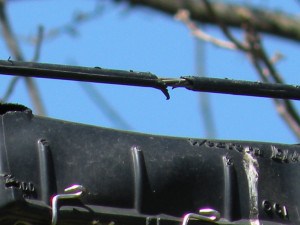In areas where limited competition between broadband providers has broken out, consumers are discovering their local providers advertising faster, higher priced tiers of Internet service. But do you really get the speeds you are paying for?
There are a number of factors that can impact your speed — the quality of the lines to your home, whether you are accessing the Internet through a wireless connection, and how much congestion your provider copes with during peak usage times. Here are some tips to consider:
If your speeds are simply awful — nearing dial-up at times — especially when the weather is poor outside, you should first suspect a problem with your connection. Call your provider and request a line test to determine if there is an obvious fault with the lines running to your home or business. The usual culprits are cracked cable fittings, worn out insulation, water getting into the wiring, or squirrels that have used your phone or cable line as a toothpick. If the line test is not definitive, request a service call to check your lines. Phone cables are especially prone to water damage, often inside terminal boxes located well off your property. Cable TV lines suffer from corrosion, insulation that has fallen away or cracked, or fittings that need replacement. If critters have chewed through the outer cable, you will often also see the results on your television with a downright lousy picture. The biggest problems always seem to appear in the spring and fall during major climate transitions.
If you notice speeds are much slower during the early evening and weekends and you are on a cable connection, your cable company has probably oversold service in your neighborhood and too many users are trying to share the line at the same time. Cable companies can divide up the traffic by splitting the neighborhood’s connection back to the cable company in half. The upgrade is usually done at a box or facility somewhere in the neighborhood, not at your home. If this prime time slowdown occurs on a DSL or fiber connection, chances are the provider doesn’t have a wide enough pipeline to the Internet to accommodate customer demand in that town or city.
Also remember that DSL connections from the phone company are sensitive to the distance between your home and the phone company’s central office. Don’t pay for higher speed tiers of service if your phone line simply refuses to support those speeds. Downgrade your service to a speed level you can realistically expect to receive in your home.
If you access the Internet over a wireless connection from a router, a major speed logjam can occur if your Wi-Fi signal faces interference from neighbors sharing the same wireless channel. Sometimes just running a microwave oven can obliterate certain wireless connections or significantly slow them down. If your signal strength meter shows poor or fair reception, try reorienting your wireless router. The higher you can place the router and keep it free of obstructions the better. Walls, floors, and even metal filing cabinets can degrade wireless signals. Many wireless routers have two antennas. Try orienting one antenna vertically and the other horizontally and see if it makes a difference. Sometimes moving a router across the room can make a significant difference. You can also try changing wireless channels if you routinely see a large number of neighbors’ Wi-Fi connections all piling on the same channel you use.
The best way to gauge what kind of Internet speeds you are getting is to perform a free speed test at different times of the day. Your service provider may have its own test website to visit (try Googling the name of your provider, your nearest city and “speed test” in a one sentence search). Broadband Reports has several different speed tests to try as well.
If you are not getting what you are paying for, be sure to complain and get some money back.
[flv width=”480″ height=”380″]http://www.phillipdampier.com/video/KNXV Phoenix Qwest and Cox may charge your for faster Internet speed, but is your broadband really that fast 8-24-10.flv[/flv]
KNXV-TV in Phoenix explains how to make sure you are getting the Internet speeds you are paying for with some free speed test websites. (2 minutes)


 Subscribe
Subscribe

